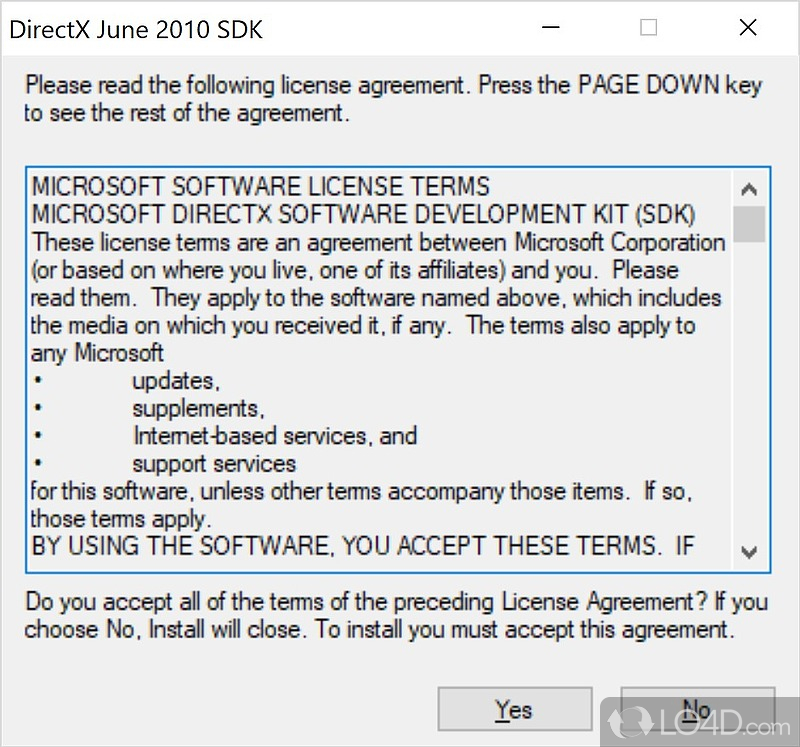Dirct X
- Posted in:Admin
- 12/04/18
- 26
DirectX logo since DirectX 9 Details Type API Included with OSR2 and all subsequent releases Related components Microsoft DirectX is a collection of (APIs) for handling tasks related to, especially and video, on platforms. Originally, the names of these APIs all began with Direct, such as,,,,, and so forth. The name DirectX was coined as a shorthand term for all of these APIs (the X standing in for the particular API names) and soon became the name of the collection. When Microsoft later set out to develop a gaming console, the X was used as the basis of the name to indicate that the console was based on DirectX technology. The X initial has been carried forward in the naming of APIs designed for the Xbox such as and the (XACT), while the DirectX pattern has been continued for Windows APIs such as and.

Microsoft DirectX is the graphics technology powering today’s most impressive games. The latest version, DirectX 11, enables the addition of advanced effects and. Describes how to obtain the latest version of DirectX to enable games and multimedia applications on your system.
Direct3D (the 3D graphics API within DirectX) is widely used in the development of for and the line of consoles. Direct3D is also used by other applications for visualization and graphics tasks such as CAD/CAM engineering. As Direct3D is the most widely publicized component of DirectX, it is common to see the names 'DirectX' and 'Direct3D' used interchangeably. The DirectX (SDK) consists of in redistributable binary form, along with accompanying documentation and for use in coding.
Originally, the runtimes were only installed by games or explicitly by the user. Did not launch with DirectX, but DirectX was included with Windows 95 OEM Service Release 2. And both shipped with DirectX, as has every version of Windows released since.
The SDK is available as a free download. Relax Das Racist Rar on this page. While the runtimes are proprietary, closed-source software, source code is provided for most of the SDK samples. Starting with the release of Windows 8 Developer Preview, DirectX SDK has been integrated into Windows SDK.
Contents • • • • • • • • • • • • • • Development history [ ] In late 1994, Microsoft was ready to release, its next. An important factor in the value consumers would place on it was the programs that would be able to run on it. Three Microsoft employees—Craig Eisler,, and Eric Engstrom—were concerned because tended to see Microsoft's previous operating system,, as a better platform for game programming, meaning few games would be developed for Windows 95 and the operating system would not be as much of a success. This was compounded by negative reception surrounding the Windows port of the video game.
The game used, which crashed on that came shipped with it following a partnership between and, as the display drivers used by the Presarios were not thoroughly tested with the API. DOS allowed direct access to video cards,,,, and all other parts of the system, while Windows 95 – with its protected memory model – restricted access to all of these, working on a much more standardized model. Microsoft needed a quick solution for programmers; the operating system was only months away from being released. Eisler (development lead), St. John, and Engstrom (program manager) worked together to fix this problem, with a solution that they eventually named DirectX. The first version of DirectX was released in September 1995 as the Windows Games SDK.
It was the replacement for the DCI and WinG APIs for. DirectX allowed all versions of Microsoft Windows, starting with Windows 95, to incorporate high-performance multimedia. Eisler wrote about the frenzy to build DirectX 1 through 5 in his blog.
DirectX 2.0 became a component of Windows itself with the releases of OSR2 and in mid-1996. Since Windows 95 was itself still new and few games had been released for it, Microsoft engaged in heavy promotion of DirectX to developers who were generally distrustful of Microsoft's ability to build a gaming platform in Windows. John, the evangelist for DirectX, staged an elaborate event at the 1996 which game developer Jay Barnson described as a theme, including real, togas, and something resembling an indoor carnival. It was at this event that Microsoft first introduced and, and demonstrated multiplayer being played over the Internet. The DirectX team faced the challenging task of testing each DirectX release against an array of and. A variety of different graphics cards, audio cards, motherboards, CPUs, input devices, games, and other multimedia applications were tested with each beta and final release. The DirectX team also built and distributed tests that allowed the hardware industry to confirm that new hardware designs and driver releases would be compatible with DirectX.
Prior to DirectX, Microsoft had included on their platform. At the time, required 'high-end' hardware and was focused on and uses. [ ] Direct3D was intended to be a Microsoft controlled alternative to OpenGL, focused initially on game use. As 3D gaming grew, OpenGL developed to include better support for programming techniques for interactive multimedia applications like games, giving developers choice between using OpenGL or Direct3D as the 3D graphics API for their applications. At that point a 'battle' began between supporters of the cross-platform OpenGL and the Windows-only Direct3D. Incidentally, OpenGL was supported at Microsoft by the DirectX team.